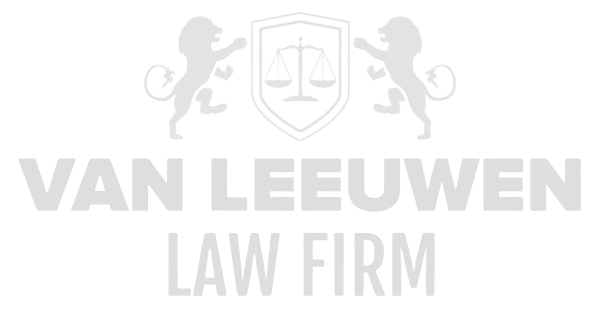Drafting policies for the protection of personal data forms the cornerstone of a robust Privacy Data and Cybersecurity Framework. Such policies provide guidance on how personal data is collected, processed, stored, and shared, ensuring that legal and contractual obligations are consistently adhered to in day-to-day operations. By systematically integrating policy documents into operational processes, clear frameworks are created for employees, systems, and supply chain partners, enabling proactive management of privacy and security risks.
Privacy statements, data breach protocols, and retention policies are part of this policy infrastructure and serve as concrete translations of abstract regulations into practical guidelines. A carefully developed privacy statement provides transparency to individuals about processing activities and rights, while a well-thought-out data breach protocol ensures a quick and structured response in the event of incidents. The retention policy regulates the lifespan of data and prevents unnecessary storage, yielding both legal and operational benefits. Together, these policy instruments form a coherent whole that ensures accountability and strengthens trust.
Privacy Policy: Structure and Content
A privacy policy serves as an overarching document in which the vision, objectives, and principles for handling personal data are outlined. This policy starts with a clear scope definition: which departments, systems, and processing activities fall within its scope, and which exceptions are applied. This creates uniformity and prevents sub-processes from operating outside the policy framework.
Next, the policy describes the governance structure: the role and mandate of the Data Protection Officer (DPO), the responsibilities of department heads, and reporting lines to the executive board or board of directors. By establishing explicit decision-making protocols and escalation mechanisms, clarity is created regarding who makes decisions about policy changes, incidents, or the assessment of new processing projects.
Finally, the policy includes references to supporting documents and procedures, such as process descriptions for processing agreements, guidelines for encryption, and standards for access codes. This alignment between policy documents and operational instructions ensures that the privacy policy is effectively applied in daily operations and that employees can quickly consult the correct resources.
Data Breach Protocols: Reporting and Triage
A data breach protocol acts as a manual during incidents in which personal data is unintentionally accessed, lost, or unlawfully processed. The protocol begins with a comprehensive definition of what constitutes a data breach, including examples of physical, technical, and organizational incidents, so that any doubt about the reporting obligation is quickly clarified.
The reporting procedure in the protocol describes a step-by-step triage: within what timeframes the initial detection must be reported, what format to use, and which officials should be notified. It also includes clear escalation paths, such as engaging legal experts in case of potential fines or reputational damage, and communication consultants in the event of possible media attention.
After the initial report, the investigation and reporting phase follows, where the scope and impact of the breach are determined. The data breach report includes, among other things, a timeline of events, categories of affected individuals, and the mitigative actions taken. The protocol then provides guidelines for formal notification to the supervisory authority and how to approach affected individuals, including sample letters and communication templates.
Retention Policy: Timeframes and Destruction
The retention policy determines the maximum retention period for each category of personal data, based on legally prescribed timeframes, contractual obligations, and the principle of proportionality. The policy forms a retention schedule in which, per purpose, legal basis, and system, it is stated how long data can be stored and under what conditions.
Upon reaching the retention period, the policy describes the procedures for data retention and destruction. This includes both technical workflows (such as automated scripts for deletion from databases) and organizational tasks (such as manual checks and certificates of destruction). Roles and responsibilities are specified to make it clear who gives the final confirmation that data has been deleted.
A functional retention policy also includes exception mechanisms: situations where data must be retained longer, such as for ongoing legal procedures or disputes. In these cases, the policy describes the process for temporary exceptions, including approval by the management and periodic re-evaluation of the exception.
Implementation and Governance
Effective implementation of the policy requires a multidisciplinary approach in which legal, IT, and operational teams share responsibility for compliance. An implementation plan describes the phases of deployment, communication and training activities, and the use of tools for automation and monitoring. A project board or steering committee oversees progress and provides direction when necessary.
Governance of the policy requires periodic review and re-evaluation. Internal audits and quarterly reviews check whether policy requirements are being adhered to and whether documentation is up to date. Based on KPIs, such as the number of reported breaches, timeliness of notifications, and completeness of retention periods, the executive board can steer the continuous improvement process.
Additionally, governance includes a change management process: when legislation changes or new technological capabilities emerge, the policy must be flexible and quickly adaptable. Clear change procedures, impact analyses, and communication plans ensure that the policy remains relevant and aligned with the current situation of the organization.
Monitoring, Training, and Adjustment
The policy only comes to life if employees, system administrators, and external partners actively apply it. Monitoring tools for privacy and security events, as well as periodic checks for compliance with data breach and retention periods, provide real-time insight into the effectiveness of the policy. Automated reports can quickly identify compliance breaches.
Training and awareness are a crucial link in ensuring knowledge and skills. Tailored e-learning modules, workshops, and tabletop exercises ensure understanding of policy requirements and practical scenarios. Periodic repetition and testing keep awareness high and encourage employees to immediately report incidents according to the data breach protocol.
Based on monitoring and training results, the policy is regularly adjusted. Lessons learned from incidents, audit findings, and changes in legislation, along with technological innovations, drive adjustments. This cyclical process—plan-do-check-act—ensures that policy documents are not static but evolve with the organization and the broader legal and threat landscape.









